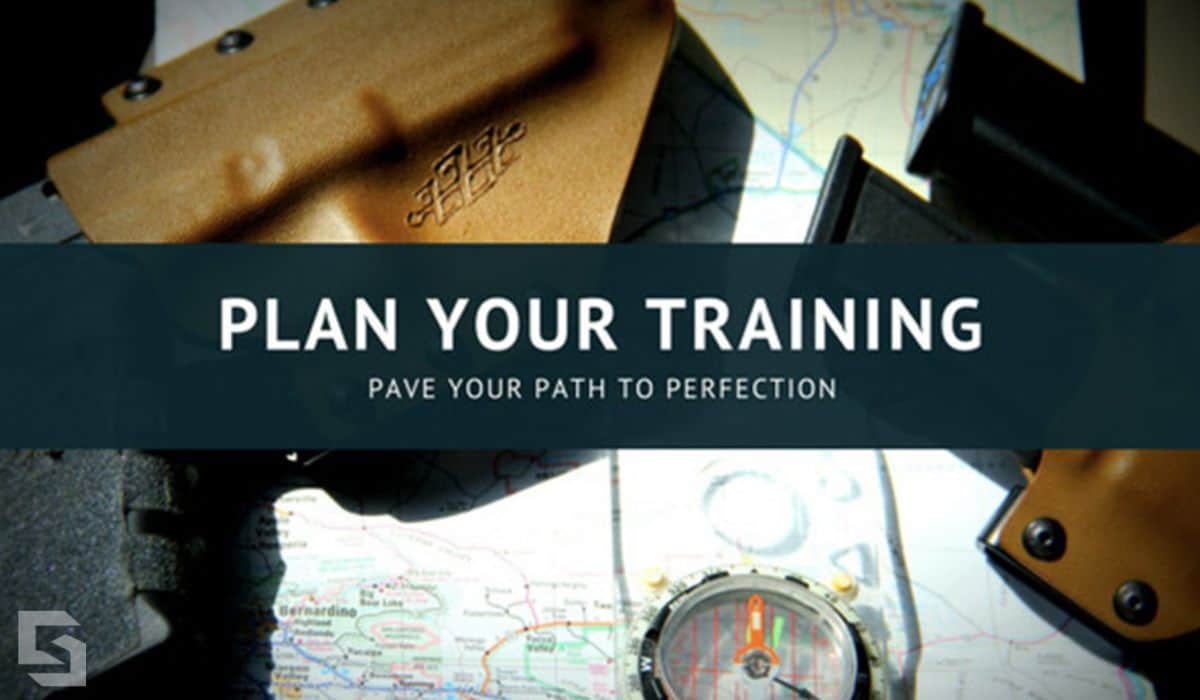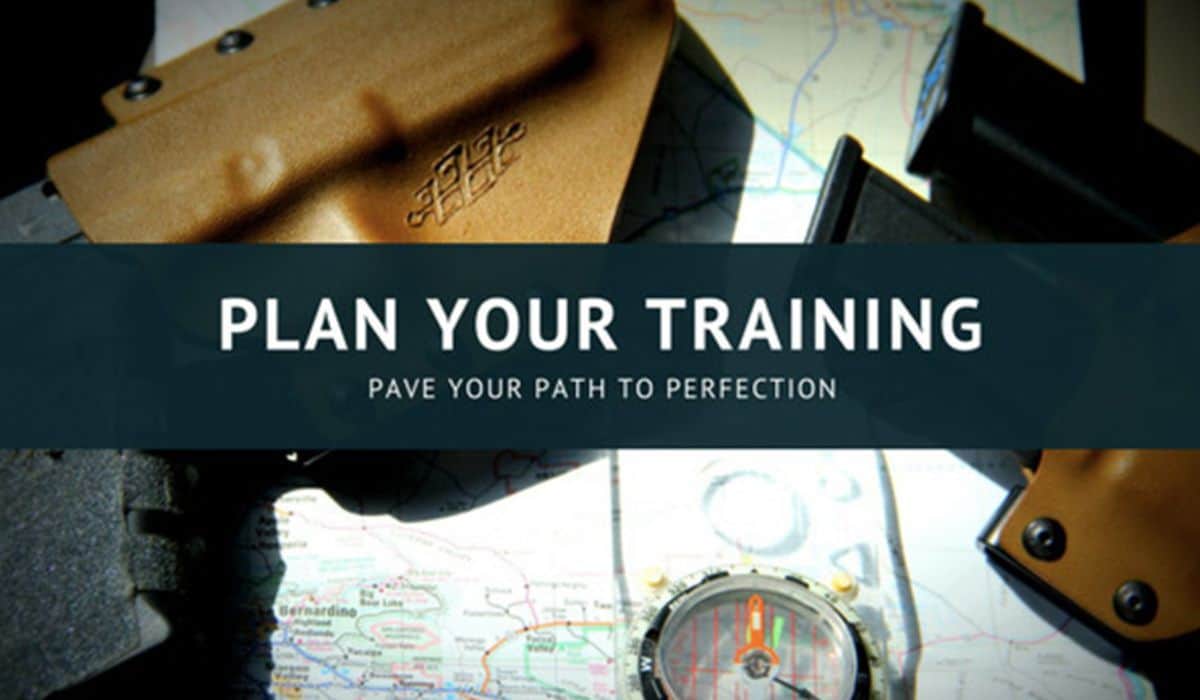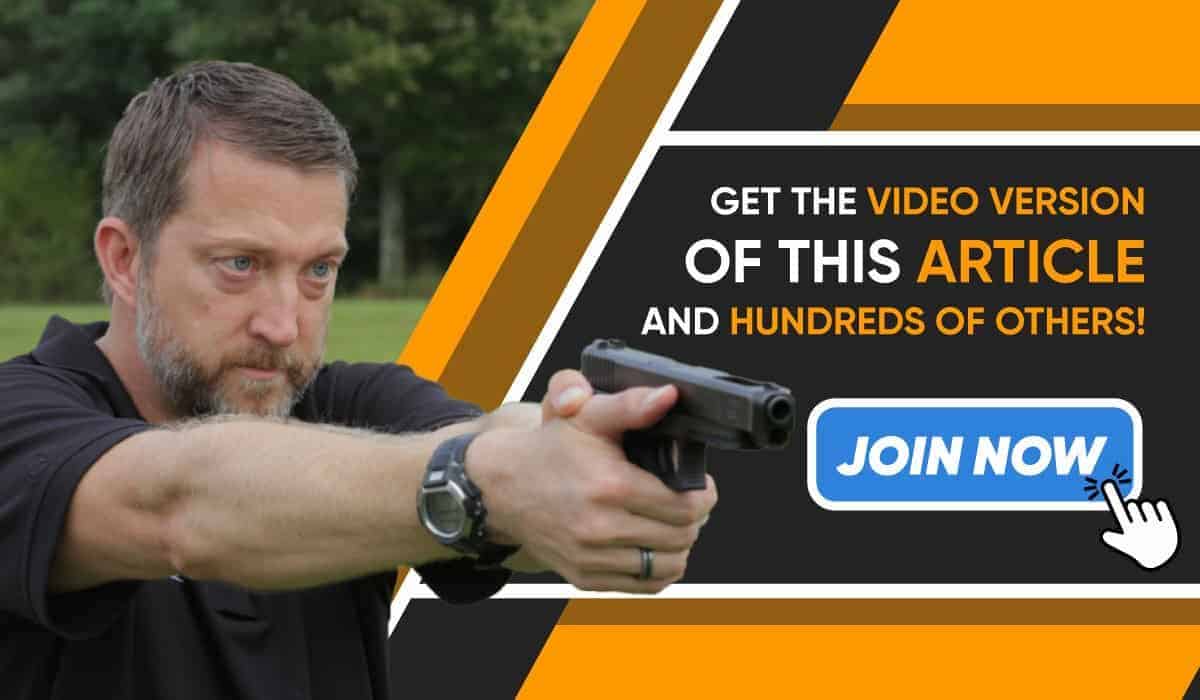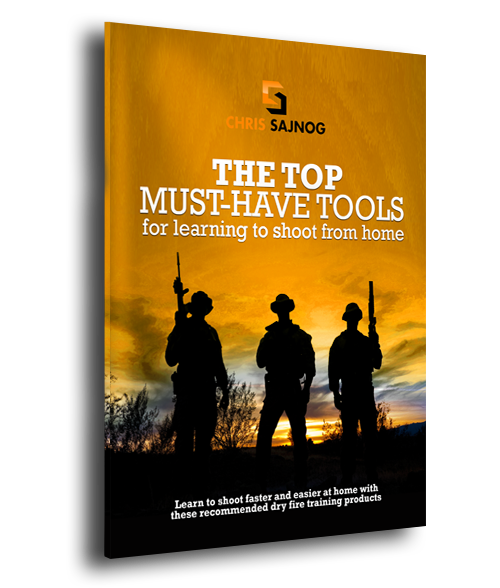Plan Your Training for Firearms Mastery and Success
When it comes to firearms training, the key to success lies in your ability to ‘plan your training’ effectively. This comprehensive guide will help you develop a well-structured training strategy, ensuring you become a responsible and skilled firearms enthusiast.
Has your firearms training hit a dead end? Not progressing as fast as you’d like? The problem likely isn’t with the instruction; it was with the input (or lack thereof) into the personalized plan you made to reach your goals. You did make a personalized plan…didn’t you? If not, don’t feel bad. Even some of the best shooters in the world don’t understand how to successfully put together an effective firearms training plan. If you adopt these three simple steps, I’ll get you off your dead-end path and on the right course.
If you are not where you want to be in your shooting game, you’re either not motivated enough, you’re getting poor instruction or you’re not using a custom training plan. I’m putting my money on the last choice. Chances are pretty good you are following a training plan that worked for someone else or was just randomly made for anyone. However, there are three elements you need for any firearms training program to be effective. I call them the “3 Ds” of effective training: definition, direction, and drive.

Definition: Aim Small, Miss Small
As a shooter, you need to know exactly where you are in your training and where you want to be. 99% of training plans out there are cookie-cutter plans that are worthless. Everyone is at a different place in their learning process or skill level and has different goals they want to achieve. How in the world is a training plan for Mike going to work for Michelle? Answer: It’s not and it’s the biggest problem with most training courses today.
But it’s not the courses themselves. It’s your plan, and a course is not a plan. A course is something you take because it aligns with your plan. The first thing you need is to get an accurate assessment of your current skill level so you or your instructor knows what you need to work on or what course you should take. Next, you need to get clear about your goals and what you want to get good at. It’s easy to think that others have the same goals, but ask just a few shooters and you find out this is far from the truth. Once you know where you are and where you want to go, you can come up with a plan.
Direction: The Shortest Route From Point A to Point B
Only when you know where you are and where you want to be will direction be of any use. Your training plan could have the best directions ever invented — super detailed, dyno-awesome video, surround-sound audio, with turn-by-turn directions — but if you’re starting at the wrong point, these directions will be meaningless. If your goal is different from the directions, you will NEVER end up where you want to be. Either way will lead to the desultory destruction of your training plan. Normally, the lessons you’re getting are not the problem. They might be a slower route or take you a little off course, but you can easily stop and ask for directions.
Drive: Skinny Pedal on the Right
Drive means that you have a reason for training. You love your family and don’t want some worthless P.O.S. to take them away from you or you away from them. You love your country and want to protect it. Hell, you just love to win and want to be at the top of your division! Whatever it is, your drive is the reason you get out of bed early to train. It’s what makes you excited and energetic about learning and growing. Without having drive, the best you can hope for is to be mediocre. You’ll get up early for a week or two, but then your little reserve battery runs out of juice and you find it’s easier to sleep in than to get up and train.

The GPS Firearms Training Model
To get all of these things working together for you (and you do need all three), you want to employ what I call GPS Firearms Training. GPS training works just like the one in your car. The first thing you need to do is tell the GPS where you are. If it doesn’t know, it can’t give you directions. If you don’t know where you are, a good instructor can also work like a GPS to define where you’re at. But depending on interference (cognitive dissonance) it can take a while to pinpoint your exact location.
Now, imagine if at this point the GPS just started giving you directions. Where the hell are you going? You need to tell the GPS where you want to go or you’ll end up wasting your time and gas driving around all day. Even then you may never get to where you want to go and there’s a pretty good chance that you’re going in the wrong direction. So only when the GPS knows exactly where you are and where you want to end up can it give you helpful directions. With well-defined start and end points, the GPS will also be able to tell you as soon as you veer off course and give you new directions to get you to your destination faster.
“If you’re not measuring your training, what you’re doing is called playing.”
Are We There yet?
After you’ve defined your points, the rest is up to you. Drive! Start moving, do something. If you’re heading in the wrong direction, your GPS will tell you — “recalculating; make a U-turn as soon as possible.” But none of these critical elements will work alone and one or more is all most training plans out there have, for those that even have a plan. Again, a goal is not a plan, a course is not a plan and a class is not a plan. A plan is your personal long-range path to get to where you want to go. Without a plan, you’ll never get to where you want to be. Don’t let it happen to you! Using a GPS Training model is the most effective way to get from where you are now to where you want to be.
Measure Your Success
Next, on this blog about Plan Your Training, Keeping up with the GPS analogy, you must ensure your firearms training is measurable. Even if a GPS tells you what direction to go in, you’ll also need to know how far you need to go in that direction. This is called measurement. If you’re not measuring your training, what you’re doing is called playing. Yes, it’s fun to shoot guns and I’m not saying not to have fun. In fact, if what you want to do is just play and have fun, by all means, do so. (Safety note: Guns are not toys and should never be played with.)
Just be clear and honest with yourself about what you’re doing. How much and what you measure is up to you and has a lot to do with your training plan. If your goal is for speed, then measuring points would not be as useful. Again, everything you do in training effectively comes down to using a GPS Training model. Figure out where you are, and where you want to be, and then measure the critical elements along the way. Make sure you keep all your data in a range book and review it often; this is the only way to know when it’s time to change direction…or even make a U-turn.

Like Drinking From A Fire Hose
Retention and transfer are the most important end results of training. Retention simply means that you remember what you learned. If you are given too much information too quickly, you’ll have cognitive overload, and, over the long term, you will not retain as much. Think of this as going too fast in your “training car” and getting pulled over and put in jail. Everything was going great, but now you’ll need to go over that path again to get back up to speed.
Take your time learning and only when you fully understand something should you move on to something else. Even if you’re an experienced shooter and want to improve, becoming a great shooter is not about learning new things. It’s about identifying what you’re doing now that is limiting your shooting. The biggest key to improving your retention is to practice often in small amounts. Other strategies include writing down the information you learned, visualizing what you learned, or even asking questions. Regular practice spaced out properly has been shown to increase retention by 200% – 700%, that’s a pretty good ROI!
I Hope the Bad Guy Is Wearing a Shirt with Dots!
The other important outcome you want from any firearms training you do is called transfer. Transfer is your ability to take what you learned in a course (or awesome shooting book) and apply it in whatever setting you’re training for — combat, law enforcement, competition, etc. The way to have better transfer is pretty easy; make sure your training is realistic. Once you fully grasp the basics, make sure you’re incorporating stress.

But if you’re training on bullseye targets all the time and expect to be able to shoot a burglar in the middle of the night, you might find that more difficult than you thought because you haven’t worked on any transfer. You can safely increase transfer by using realistic targets, shooting at night/low light, shooting under stress, and using airsoft to set up realistic scenarios in your home. The more training you do and the closer you can get to the two ends (training and application), the easier it will be for the learned skills to jump the gap to application.
Do you plan your training and have a customized firearms training plan? If not, pull over to the side of the dead-end road you’re on and figure out where you’re at before spinning your wheels anymore. If you’ve got a plan, let me know what it is in the comments below.




I own several different rifle and handgun platforms in different calibers, ranging from 9mm to 7.62×39. If you had an ideal round count in a given period, and given your recommendations are put in place, how much ammo should one expend on a given platform without spreading yourself too thin? I understand that the quality of practice is what makes the difference, but being realistic about time, it’s not viable to dedicate several hours/week to a given platform. Mitigating factor: I work at an indoor range where I have access to an empty range before opening and after hours.
Thanks
You lucky dog! I wish I had access to a free range every day!
Giving you a round count would be impossible, but I can help out:
1. Practice weakness-biased training – Go through all your platforms, test your skills and see where the weaknesses are. Just like paying off your credit card debt, work on the ones you need the most work on. This will translate into improvement in all you weapon systems.
2. Don’t good too long without shooting any one weapon. How long? Again, this depends on you.
Good luck amigo! -Chris
I am new to shooting and have been shooting low at all distances with fixed sights. Im thinking of purchasing the laserlyte target and 40cal insert for my handgun. Have you used it and is it an effective training tool?
I do! Here’s an article I wrote a few years ago: http://centermassgroup.com/review-laserlyte/
Hooyah!
I live in Canada and we have pretty tight firearm laws here which limits the legal option for home defense….actually there are no legal options as according to the regulations “self defense” is not a lawful reason to own a firearm but I digress…..
I have a short barreled 20 gauge side by side, that I certainly didn’t buy with the purposes of putting down any POS that decides to come into my house without invitation, and I was wondering if you could recommend any books/exercises for training with it. I recognize that airsoft can be a good option for HD training but I’m not very familiar with airsoft an don’t know what would best mimic movement and firing with a shotgun. I figure it’d be best to train with something similar in size, weight, and configuration to my shotgun. Do you think dry-firing and snap caps to practice reloading would be enough?
I know a 20 gauge, 2 shot shotgun might seem like a poor choice for HD but in my understanding in Canada we’re limited to 3 shells max capacity anyway, my wife isn’t comfortable with a 12 gauge, and with it not being pump action I don’t have to worry about either of us short-stroking it in a SHTF moment. Also having something that looks as far from a “tactical” firearm as possible would help a lot with potential prosecution down the road.
I really appreciate any insight and advice you could give.
Cheers,
Brandon
Brandon,
Glad to know that California is not the only place they don’t like anyone except criminals to have guns!
The MOST important thing you need to do for ANY home defense is realistic situational training. Walk through all the places you might need to shoot, think about where the rounds could go if you miss, where do you have cover? Dry fire is a great way to train doing all this. If you practice perfect execution enough times, if you ever need to use it – pulling the trigger on the real thing will be easy. Adding an airsoft shotgun might add some benefit as well. You don’t need anything fancy either, just something that you can put up a target and put some holes in. Amazon has some pretty good deals. Click here to check them out.
Hope this helps.
Chris
Snowman, I’m in California and have been intermittently checking your site for a training schedule for the past few years. I must’ve missed them, but I have seen any, lol. I’m a rather new shooter, I frequent the range a lot but I’d like to get serious about training. Will you be holding any classes anytime soon? I’m in the LA are, but I’m more than willing to make my way down to SD.
Jagg –
You didn’t miss them. I’ve been researching different options for running civilian courses here in Commmi-Fornia and for what I want to do and how I run courses, there are no good options. I’ve decided to offer my training by partnering with interested civilian shooters by having them host a course at their local range or private property and come run the training. By doing this students don’t have to travel to me or pay for hotels, etc. Plus courses are customized to each group for their skill level and what they want to learn.
Hooyah!
Chris
Chris,
Thanks so much for answering my questions. I really appreciate your time.
It sucks that this poor guy had to deal with all this but at least it’s a step in the right direction in Canada: http://ww2.nationalpost.com/m/wp/blog.html?b=fullcomment.nationalpost.com/2013/01/04/matt-gurney-after-two-years-judge-acquits-man-who-defended-himself-with-a-gun
Hey Chris,
I was wondering if you had any information you would share or sources you’d recommend on building/room clearing tactics? I ask as I assume there’s slightly more to it than kicking down doors and punching bad guys in the throat and I know I have a couple of points in my own house that I’m not sure what the best strategy would be. There are lots of “experts” on the internet shilling out bad information so I thought I’d ask if you could please point me in the right direction. I wish I could claim that I knew half as much as I’d like on these sorts of subjects but my “tactical” experience is limited to small amounts of paintball and snowball fights.
Thanks,
Brandon
Brandon,
This will be the topic of my next book and I’m just finishing up my current book. Look for more articles centered around this as I’m writing the book.
Hooyah!
Chris